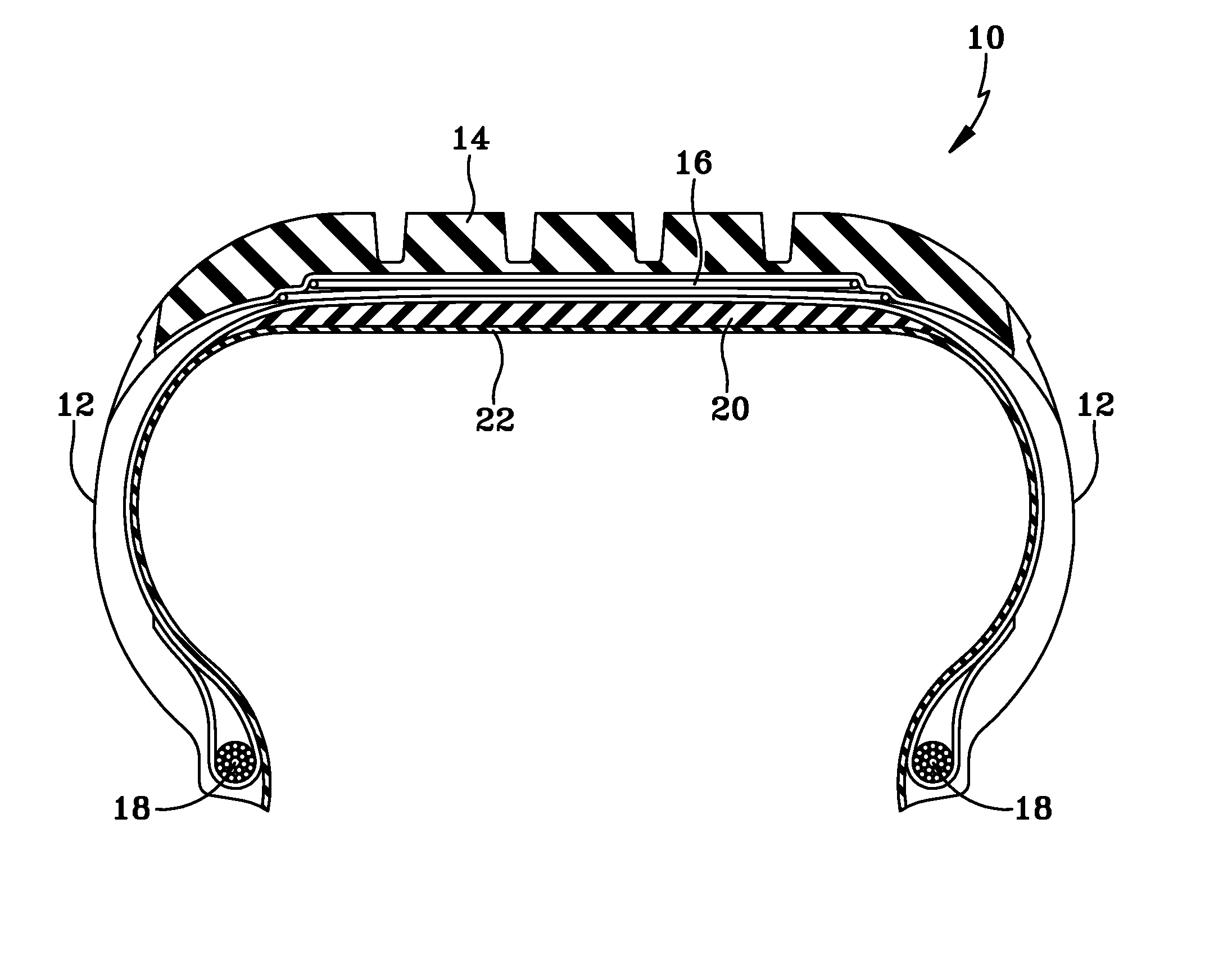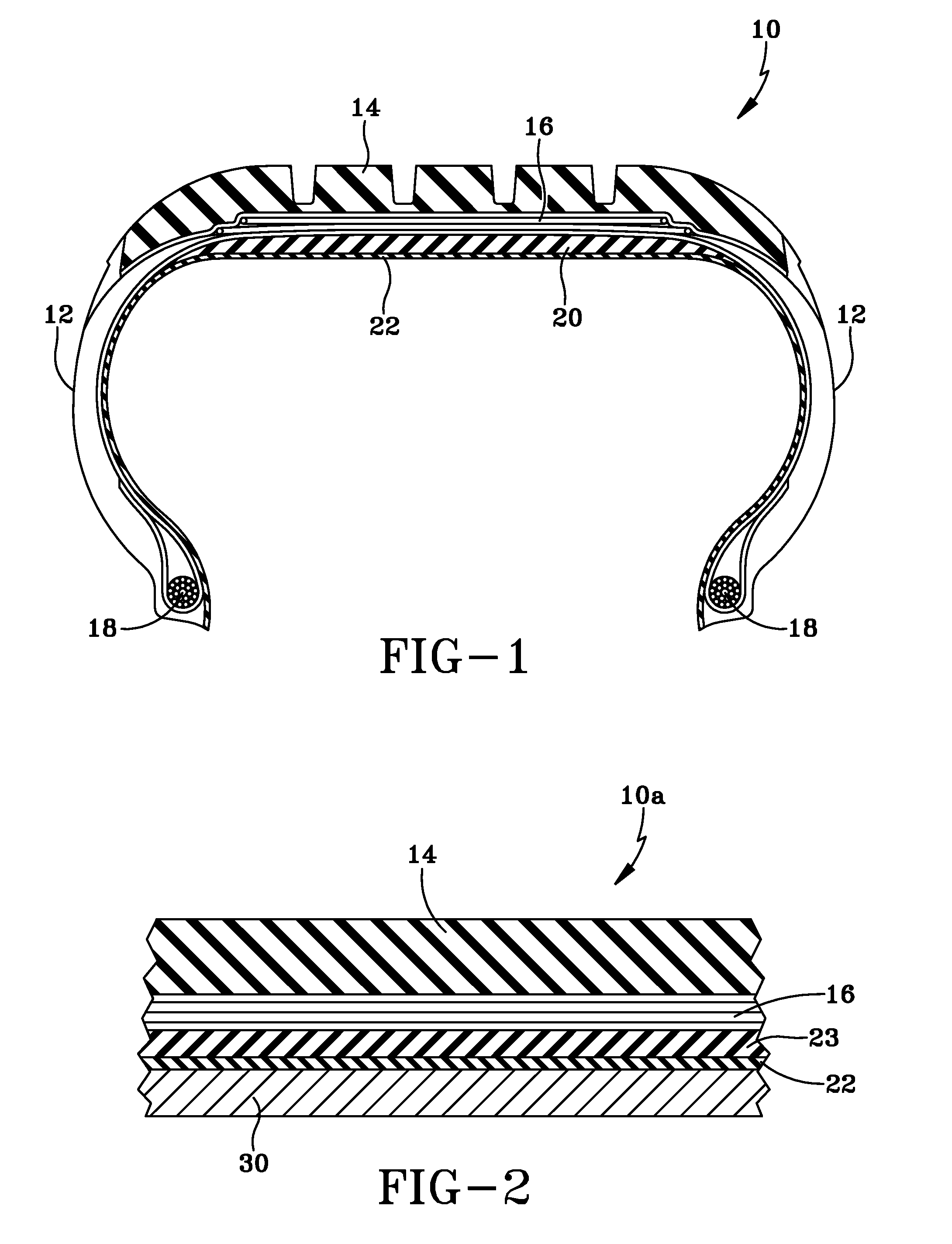Pneumatic tire having built-in sealant layer and preparation thereof
a technology of sealant layer and pneumatic tire, which is applied in the direction of tires, vehicle components, domestic applications, etc., can solve the problems of tire out of balance, liquid sealant may not be entirely operable or effective, balance and suspension problems, etc., and achieve the effect of reducing inner liner blister formation or reducing the formation of blisters
- Summary
- Abstract
- Description
- Claims
- Application Information
AI Technical Summary
Benefits of technology
Problems solved by technology
Method used
Image
Examples
Embodiment Construction
[0014]FIG. 1 shows a pneumatic tire 10 that has an ability to seal punctures and has the ability to eliminate or reduce blister formation in the tire 10, particularly inner liner blister formation. The tire 10 includes sidewalls 12, an outer circumferential rubber tread (or tread portion) 14, a supporting carcass 16, inextensible beads 18, a built-in sealant layer 20, and an innermost rubber inner liner 22. The individual sidewalls 12 extend radially inward from the axial outer edges of the tread portion 14 to join the respective inextensible beads 18. The supporting carcass 16 acts as a supporting structure for the tread portion 14 and sidewalls 12. The sealant layer 20 is disposed inwardly from the supporting carcass 16 and situated adjacent the rubber inner liner. The outer circumferential tread 14 is adapted to be ground contacting when the tire 10 is in use.
[0015]The rubber tire inner liner 22 may be any known rubber inner liner for use in pneumatic tires 10. In one example, th...
PUM
| Property | Measurement | Unit |
|---|---|---|
| thickness | aaaaa | aaaaa |
| thickness | aaaaa | aaaaa |
| thickness | aaaaa | aaaaa |
Abstract
Description
Claims
Application Information
 Login to View More
Login to View More - R&D
- Intellectual Property
- Life Sciences
- Materials
- Tech Scout
- Unparalleled Data Quality
- Higher Quality Content
- 60% Fewer Hallucinations
Browse by: Latest US Patents, China's latest patents, Technical Efficacy Thesaurus, Application Domain, Technology Topic, Popular Technical Reports.
© 2025 PatSnap. All rights reserved.Legal|Privacy policy|Modern Slavery Act Transparency Statement|Sitemap|About US| Contact US: help@patsnap.com


